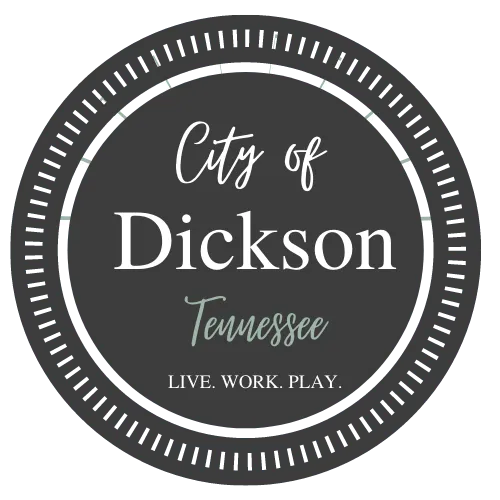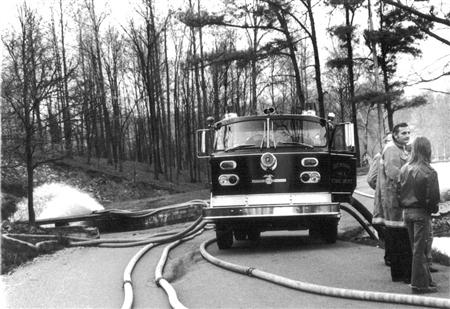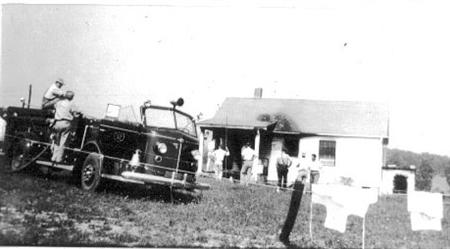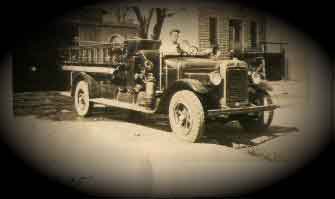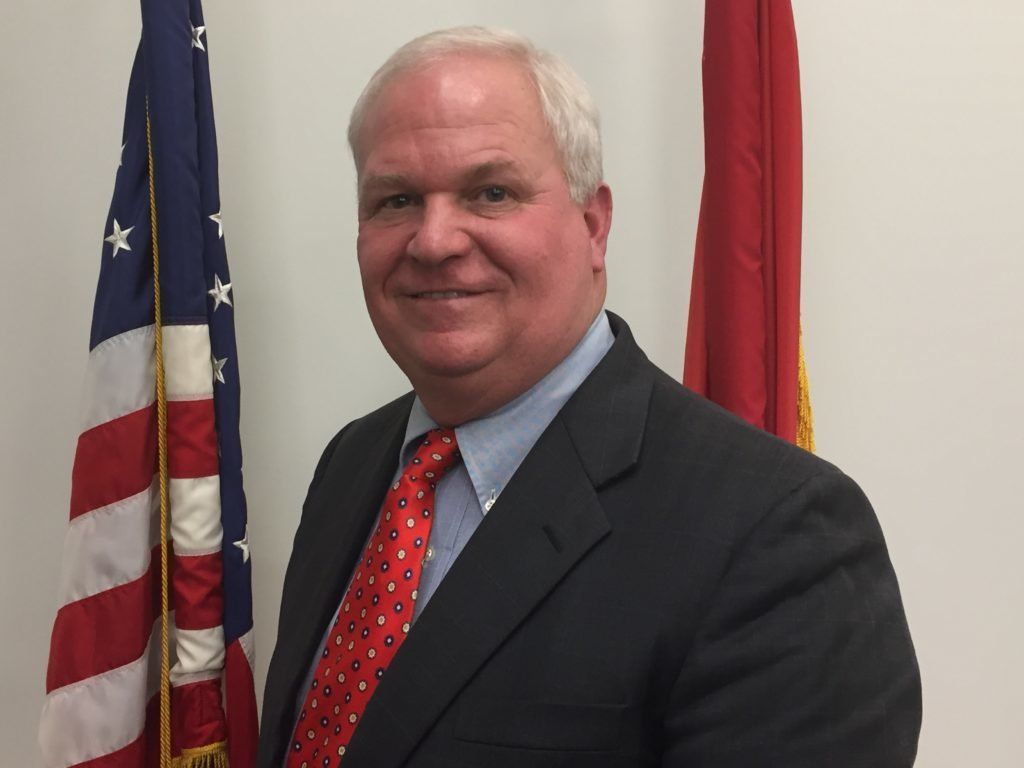History
Prior to the current incorporation of the City of Dickson, Tennessee, in 1899, the town was served by a volunteer bucket brigade when it came to firefighting. The first major fire that struck the heart of the town was in 1894, resulting in the total destruction of the business district from Railroad Street north for an entire city block. Manned by whatever volunteers were available at the time, the water for the bucket brigade was supplied by a public well located on Main Street.
The downtown area was restored and this time it was built with brick construction to make it more fire resistant.
A short time later, the downtown area was leveled by another fire in 1904.
Following this second devastating fire, the Board of Aldermen voted to let a $25,000 bond issue to finance and new water system and a city-operated fire department. The new fire department consisted of a two-wheeled, hand-drawn hose cart purchased from the Owensboro Wagon Company, some fire hose and some official volunteers. The cart was stored in a small building at the old fire engine house, which was on the lot immediately behind the current Bank of Dickson on Main Street.
In 1928, the Town of Dickson purchased a motorized fire engine. It was a 500-gallons-per-minute pumper made by the Boyer Fire Apparatus Company of Indiana. This engine remains in service at the Dickson Fire Department in a ceremonial capacity for parades and other special events. The town purchased additional pumpers in 1947 and 1958.
Many changes were made in the department 1904-1964 through several mayoral administrations and under several chiefs. The department’s first fire chief was Mr. Joe Lock. He was followed by W.R. “Bob” Boyte, Cheatham Bates, Claude Hooper, Claude Ragan and W.L. “Junior” Smith. Smitty joined the department as a volunteer in 1956 and remained until he was hired on as a full-time employee under Mayor W.A. Crosby in 1964. More recent chiefs have included Clayton Brazzell, Clay Tidwell and Richard “Smiley” Greer, who has served as chief since 2009.
The year 1964 also brought a new home for the fire department. After the site behind the Bank of Dickson was damaged by fire, the town decided to give the department a new home and a new station was erected at the corner of Church and Water streets. This building had facilities to house the equipment as well as living quarters for the chief’s family or future firefighters. Shortly after the new building was occupied, Smitty was appointed as the new chief of the fire department.
Chief Smith’s first major goal was to establish a full-time fire crew to staff the new department around the clock. By 1970 the station was staffed with a total of nine men including the chief. In 1971, Mayor Crosby and the Board of Aldermen purchased a new 1,000-gallon-per-minute pumper from the Howe Engine Company in Indiana. The citizens of Dickson would soon realize how important this addition to the town’s firefighting strength would be.
Shortly after the arrival of the new pumper, a major fire broke out in the National Store on North Main Street. The new pumper and the on-duty firefighters played a major role in preventing a disaster similar to the two previous fires that devastated the downtown business district.
Under Mayor Slayden Weaver, the town purchased a one-ton truck that was outfitted as a rescue unit similar to those used by paramedics on television programs. This unit also has a water tank and a high-pressure pump, which enables it to handle many small fires.
By 1975, the department’s manpower had increased to a total of 15 firefighters. That year the department got a new 1,500 gallons-per-minute pumper under Mayor J. Dan Buckner. Shortly after the purchase of the new pumper, the department had to build an addition to the rear of the station on Church Street so it could properly house the new equipment.
The improvements in equipment and additional manpower enabled the department to advance to a Class 6 city in regard to insurance rates. The insurance agencies use a code to establish rates for premiums for homeowners and commercial policies based on the fire department’s ability to respond to fires and the availability of sufficient water. The lower a city’s Insurance Service Office rating, the bigger discounts are available on insurance rates. The City had previously held a 7 rating and the lower rating brought lower premiums for homeowners and businesses inside the city. Later in Mayor Buckner’s administration, the city purchased a 1,500-gallon tanker truck that provides water supply for firefighting in areas where there is no access to fire hydrants. This proved to be a very useful piece of equipment that has helped the department save a lot of property.
In addition to its own equipment, the Dickson Fire Department also houses a unit of the State Civil Defense. This unit is equipped with an emergency generator and would be very useful in a major blackout situation. The Civil Defense became very interested in Dickson after the department’s performance at the propane tank disaster in neighboring Waverly on Feb. 24, 1978, that resulted in 16 deaths and devastated much of the Humphreys County town. Two fully equipped and staffed units from Dickson were among the first to arrive at Waverly after a derailed propane tank exploded. Since the Dickson unit was the first to apply cooling water onto a second propane tanker, Mr. Ron Collins of the State Civil Defense remarked that the Dickson Fire Department was most certainly responsible for preventing the second tanker from exploding and possibly killing more people. The Dickson Fire Department remained on duty from shortly after the explosion until after the people of Waverly had buried their dead. The department’s Number 4 pumper pumped a total of 31 hours and nearly 1 million gallons of water before the emergency was over. This marked the third time the neighboring town had called on the Dickson department for assistance.
As a result of the Waverly disaster, the department sent five men to receive extensive training in the handling of emergencies involving hazardous materials. The Dickson firefighters scored among the highest of any in the state of Tennessee.
The Dickson Fire Department now has a full-time training officer and an active training program to help ensure that its firefighters are among the best-trained, most professional in the area.
The department also has a full-time Fire Marshal as well as a Fire Prevention Officer who helps to eliminate many dangerous situations before they occur.
As the City of Dickson’s boundaries grew south past Interstate 40, the department added a second fire station in 1991 on Pringle Road in the Pomona area to better serve the growing area and reduce response times to the southern part of the city, the William D. Field-Dickson County Industrial Park and Interstate 40.
In 2020, the city began steps to construct a third fire station on the east side. The city obtained property on the corner of Highway 70 East and Ridgecrest Drive and construction of a 10,000-square-foot station is expected to be completed in early 2023. The city began preparing to staff the new station by obtaining a three-year grant in 2017 to hire and train six new firefighters.
The Dickson Fire Department also continues to formulate plans for the construction of a modern firefighting training facility not only to help its firefighters improve their skills and knowledge but to offer training to other departments as well.
The department also has a goal of continuing to improve the city’s ISO rating, which currently stands at a 3, resulting in further insurance discounts for residents and businesses.
Serving the citizens of Dickson around the clock, saving lives, protecting property and doing it to the best of their abilities has been and continues to be the constant goal of the men and women of the Dickson Fire Department from its creation to today’s firefighters.
Historical Photo Gallery

